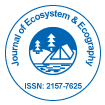Наша группа организует более 3000 глобальных конференций Ежегодные мероприятия в США, Европе и США. Азия при поддержке еще 1000 научных обществ и публикует более 700 Открытого доступа Журналы, в которых представлены более 50 000 выдающихся деятелей, авторитетных учёных, входящих в редколлегии.
Журналы открытого доступа набирают больше читателей и цитируемости
700 журналов и 15 000 000 читателей Каждый журнал получает более 25 000 читателей
Индексировано в
- Индекс источника CAS (CASSI)
- Индекс Коперника
- Google Scholar
- Шерпа Ромео
- Онлайн-доступ к исследованиям в области окружающей среды (OARE)
- Открыть J-ворота
- Генамика ЖурналSeek
- Справочник периодических изданий Ульриха
- Доступ к глобальным онлайн-исследованиям в области сельского хозяйства (AGORA)
- Библиотека электронных журналов
- РефСик
- Университет Хамдарда
- ЭБСКО, Аризона
- OCLC- WorldCat
- Онлайн-каталог SWB
- Виртуальная биологическая библиотека (вифабио)
- Публикации
- Женевский фонд медицинского образования и исследований
- Евро Паб
Полезные ссылки
Журналы открытого доступа
Поделиться этой страницей
Абстрактный
Soil Biodiversity in the Anthropocene: Opportunities and Challenges
Nicola Reimer
Human modifications to the environment have a significant impact on biodiversity on Earth. Most research have focused on biodiversity above ground, but little is known about whether changes in biodiversity below ground follow the same trends as those seen above. It is now well-established that direct human activities like soil sealing, agricultural land-use intensification, and biological invasions brought on by the introduction of non-native species have significantly changed communities of soil biota. In addition, the biodiversity of soil has been impacted by altered abiotic circumstances brought on by climate change. Thus, human-induced global changes have a feedback impact on ecosystem services via altered soil biodiversity. These changes in soil biodiversity might influence ecosystem functions carried out by the soil biota. Here, we focus on the main issues that pose a hazard. We discuss ways to stop the loss of soil biodiversity and offer solutions. We contend that safeguarding soil biodiversity is crucial because it serves as a rich reservoir and protection from the Anthropocene’s changes. Overall, we need to get a better understanding of the factors that affect soil biodiversity and how they work, make plans to stop further losses, and, where practical, restore soil biodiversity. The sustainability of the soil and, eventually, the sustainability of human society depends on the protection of this abundant biotic reservoir. A significant portion of the naturally occurring land has been transformed into human-influenced biomes during the Anthropocene, which today make up around 75% of all land on Earth. The pressure on the remaining natural land is only becoming worse due to the rapidly growing human population and the growing ecological impact per person. In addition, the Earth’s climate is changing more quickly than ever before, with an increase in the frequency and intensity of extreme weather events like droughts and violent storms as well as an increase in the introduction of exotic organisms that have the power to alter entire ecosystems.
Журналы по темам
- Биохимия
- Ветеринары
- Генетика и молекулярная биология
- Геология и науки о Земле
- Еда и питание
- Иммунология и микробиология
- Инженерное дело
- Клинические науки
- Материаловедение
- медицинские науки
- Науки об окружающей среде
- Общая наука
- Сельское хозяйство и аквакультура
- Социальные и политические науки
- Уход и здравоохранение
- Фармацевтические науки
- Физика
- Химия

 English
English  Spanish
Spanish  Chinese
Chinese  German
German  French
French  Japanese
Japanese  Portuguese
Portuguese  Hindi
Hindi